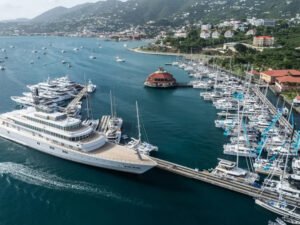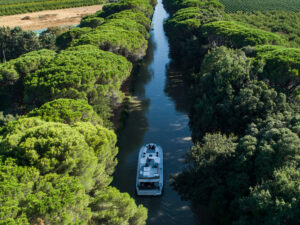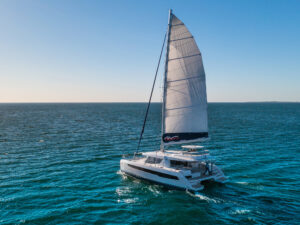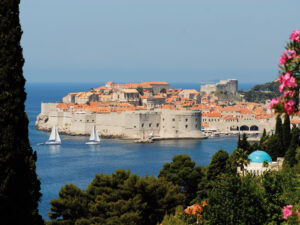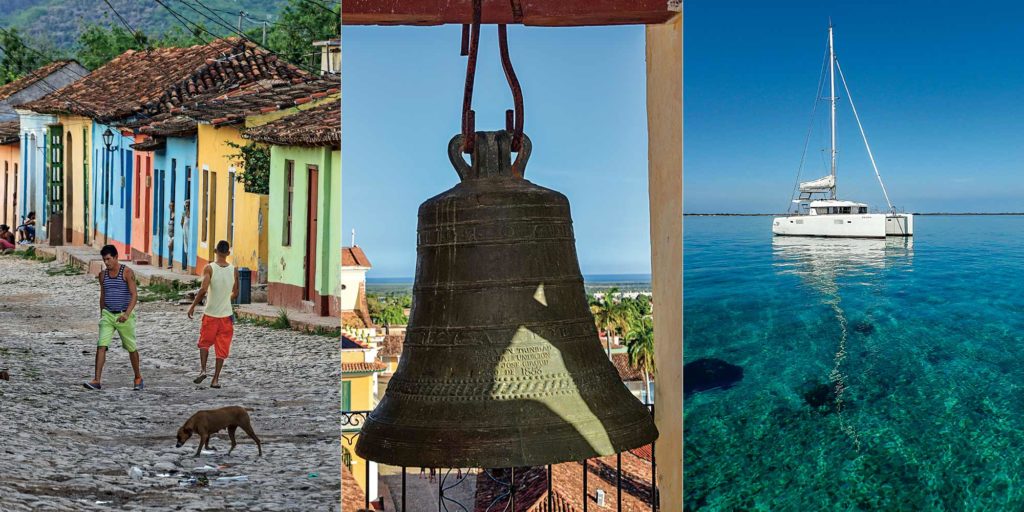
It was early May in New England, filled with sunshine and the promise of budding flowers and green leaves, and my 36-foot sloop, Tazzarin, was ready to go into the water in a few weeks. However, my spirits felt differently. My sister, Isabel, had passed away suddenly and unexpectedly; it took the wind from my sails. I needed a change. As Ishmael says in Melville’s Moby-Dick, “Whenever I find myself growing grim about the mouth, whenever it is a damp, drizzly November in my soul … then, I account it high time to get to sea as soon as I can.”
There was only one thing to do. I called my oldest boyhood sailing pal, John Winchester, at his home in Manhattan. I had been contemplating chartering in Cuba for a few years, and was drawn to the country’s promise of natural beauty and maritime history. If John and I were going to go cruising in Cuba, there were two places I had to see.
First was the port town of Trinidad, a UNESCO World Heritage Site and one of the oldest towns in Cuba. Second, I had long been tempted by the lure of the most remote section of the island, the Jardines de la Reina, or Gardens of the Queen. The Jardines de la Reina were named by Christopher Columbus during his second voyage to the New World in 1494. Columbus believed the 75-mile-long archipelago of tropical islands to be the most beautiful he had seen in all his voyaging; thus, he named them in honor of his sovereign, Queen Isabella. Today, the islands appear much as they did when Columbus was there. They are uninhabited, remote and boast some of the most pristine coral reefs in the world.
I had high expectations for cruising in Cuba. Would Cuba live up to them? Would I gain more understanding of the region and its residents? The week of sailing ahead would reveal the answers.
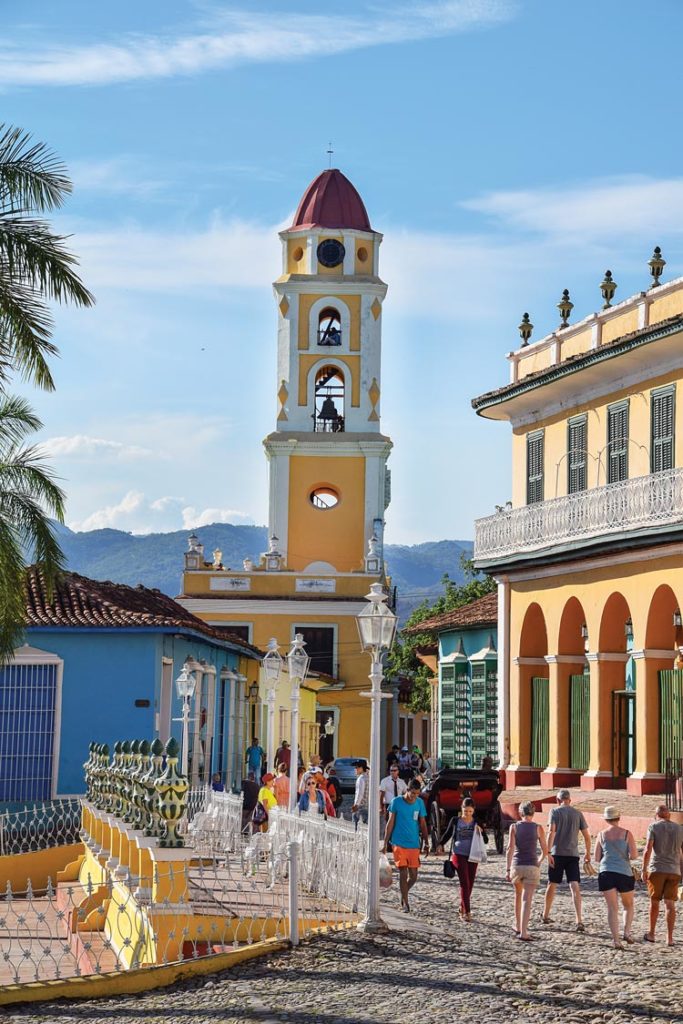
Working with a broker, we had arranged a bareboat charter of a Lagoon 39 catamaran, Pollock, with Dream Yacht Charter out of the company’s Cienfuegos base. Cienfuegos, in the middle of Cuba’s south coast, was the closest major port for our rather spirited itinerary of 250 miles of sailing in a week. The distances and the somewhat more challenging navigation of the offshore islands makes them far less traveled than other parts of Cuba.
John and I arrived in Cienfuegos in the early evening and hopped in one of the iconic classic cars at the airport and located our Airbnb lodgings. We had a two-bedroom rental in a casa particular for the first two nights to allow us to explore the town before setting sail.
RELATED: Sailing Expedition To Cuba
The following day, we awoke to the early morning voices of street vendors calling out their wares: bread, fruit, onions and more. Wanting to see more of Cienfuegos, we approached one of the other common forms of transportation for tourists and Cubans — a horse-drawn cart with a friendly driver. We wanted to see outside the city center, so he drove us off to his own neighborhood, waving to friends along the way and passing vendors peddling or pushing their carts from house to house. Before returning, he dropped us at the Cementerio la Reina, where crypts in the walls hold soldiers and freedom fighters of Cuba’s past wars of independence. Our next stop was an indoor farmers market, where we bought pineapples, tomatoes, cucumbers, papayas and other fruits to supplement the provisions our charter company was providing.
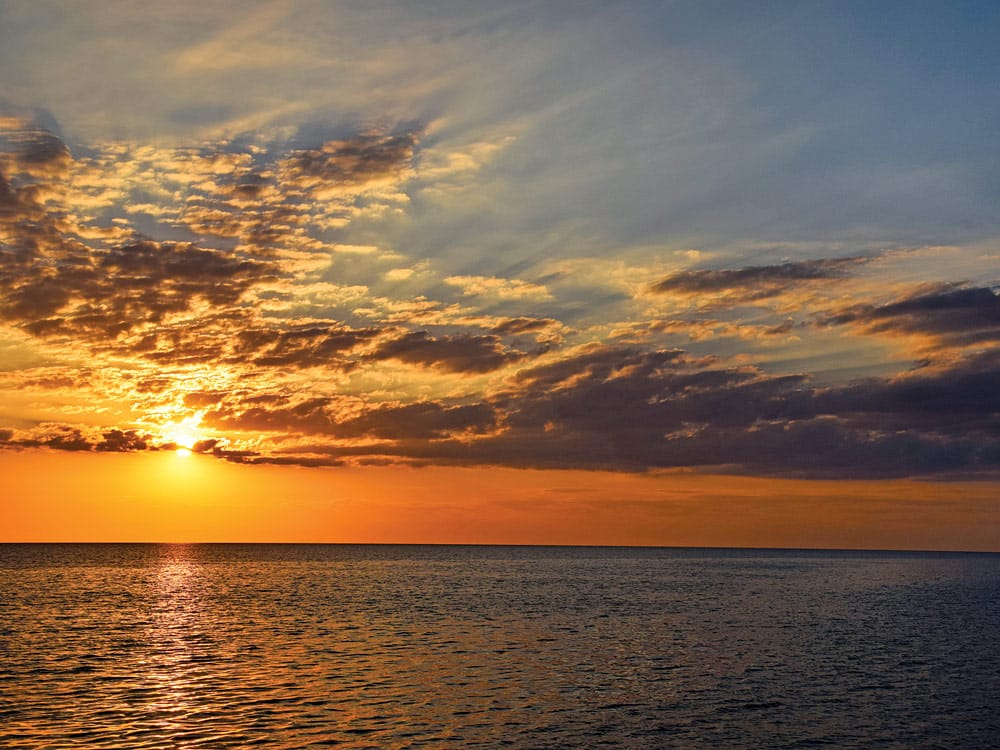
Osvaldo, from Dream Yacht, met us aboard the catamaran to run through the boat’s systems. The boat was built in France in 2016, and was in terrific condition. One dilemma was that of the provisions we ordered, a number of items were not aboard. This is par for the course in Cuba, where weeks or months can pass with no availability for some items. After stowing our gear and groceries, John and I walked to the southern tip of Cienfuegos, known as Punta Gorda, and ate a delicious fish dinner at the Pelicano paladar (a privately run restaurant).
We were up before dawn. The charter company, at our request, had scheduled the Guarda Frontera to meet aboard the boat at 0600. The first and last step in leaving or entering any Cuban port on the main island is to obtain clearance from the Guarda Frontera, the Cuban coast guard. During each of our four clearances, the officers were always friendly, courteous and efficient.
Once done with the formalities, we cast off and headed out. Bahía de Cienfuegos is an enormous pocket bay, opening through a long, narrow channel to the sea. Halfway through the channel, we passed the Castillo de Jagua, a commanding fortress built in 1738. Just beyond this is the main Guarda Frontera base, perched atop a seawall emblazoned with 6-foot-tall, multicolored letters reading, “Bienvenidos Cuba Socialista,” a powerful reminder of Cuba’s system of government.
Once done with the formalities, we cast off and headed out. Bahía de Cienfuegos is an enormous pocket bay, opening through a long, narrow channel to the sea. Halfway through the channel, we passed the Castillo de Jagua, a commanding fortress built in 1738. Just beyond this is the main Guarda Frontera base, perched atop a seawall emblazoned with 6-foot-tall, multicolored letters reading, “Bienvenidos Cuba Socialista,” a powerful reminder of Cuba’s system of government.
Out on the open sea, it would be 40 miles to Cayo Blanco de Casilda, a small cay roughly halfway to the gardens. A nice easterly had built, and we set main and genoa and sailed southeastward. To starboard lay a smooth turquoise sea, while to port the majestic Sierra Escambray range rambled off into the distance, rising more than 3,000 feet in the morning mist.
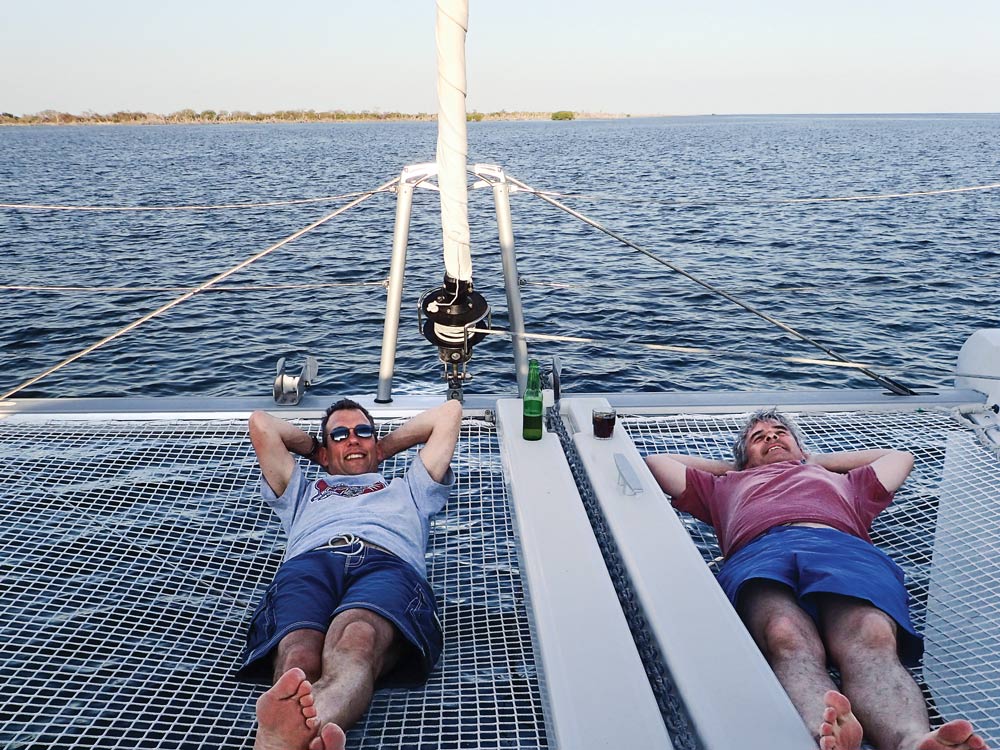
By midafternoon we sighted Cayo Blanco de Casilda and skirted in behind the cay and dropped anchor. We headed ashore to a small float in the shallows and scampered up a winding boardwalk to the rustic “restaurant,” which would be our last bit of civilization. It is a one-man operation; the lone cook/bottle washer offered to make us a lobster dinner, and we sat down in the shade with a beer and a mojito. We were the only customers; the island was ours. After a second drink, the meal arrived. It was both beautiful and huge — lobsters, shrimp, cucumber salad, rice, fresh-cut french fries, tomatoes, bread, marinated red peppers, onions and more.
The following morning, we rose early for another 40-plus-mile day to make it to Cayo Bretón at the western start of the Jardines de la Reina. It was picture-perfect, with blue sky, smooth seas, the breeze a bit north of east and dolphins cavorting in the waves. As we continued southeast, the mainland and the Escambray mountains faded away; soon we were out of sight of land and sailing on an ocean to ourselves.
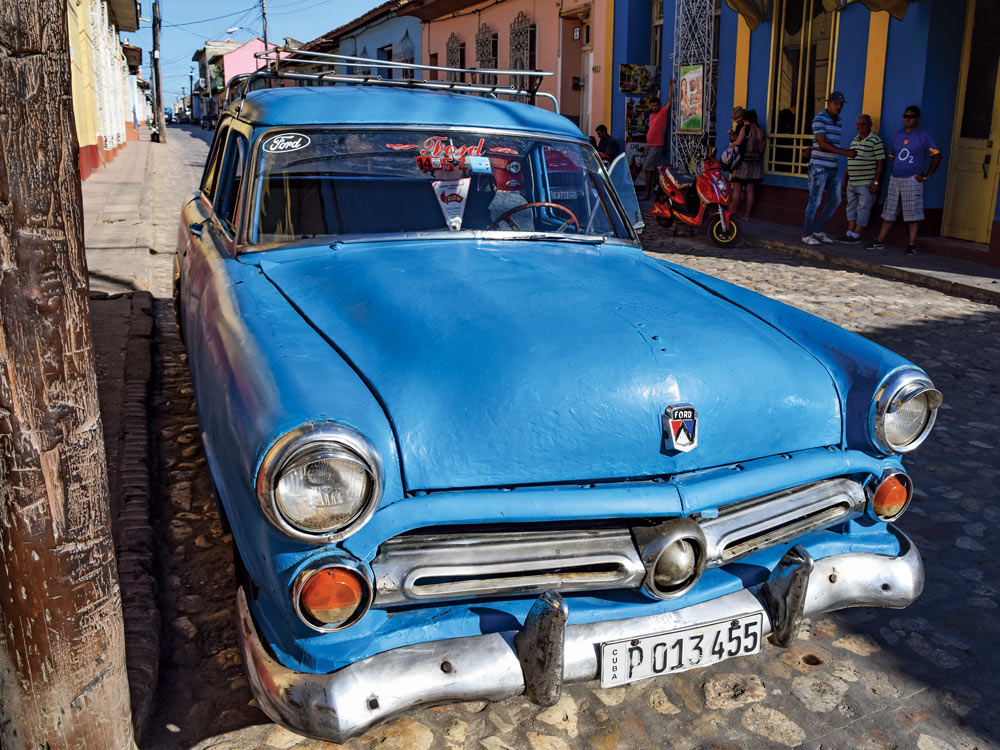
We approached around the western point of Cayo Bretón in the lee of the prevailing easterlies and nosed in closer to the white-sand beach as magnificent frigate birds and cormorants swooped overhead plucking fish from the sea. With some daylight left, we hopped into the inflatable and explored the islets and myriad channels leading to the enormous lagoon that occupies the center of Cayo Bretón. Herons, songbirds and egrets ambled and flitted through the mangroves as we discovered the secrets of the lagoon. John and I returned to the boat, got some drinks and lay in the trampoline, enjoying the cooling breeze. We felt away from it all and took in the scenery.
As we pondered our dinner options, a fishing boat approached us in the looming dusk and offered up a couple of huge lobsters, for which we traded a $3 bottle of rum and a few pesos. The fishermen also wanted to trade for our sunglasses, though we limited the deal to lobster and rum only. As we ate lobster with fresh lime, a nearly full moon rose in shimmering orange over a calm sea.
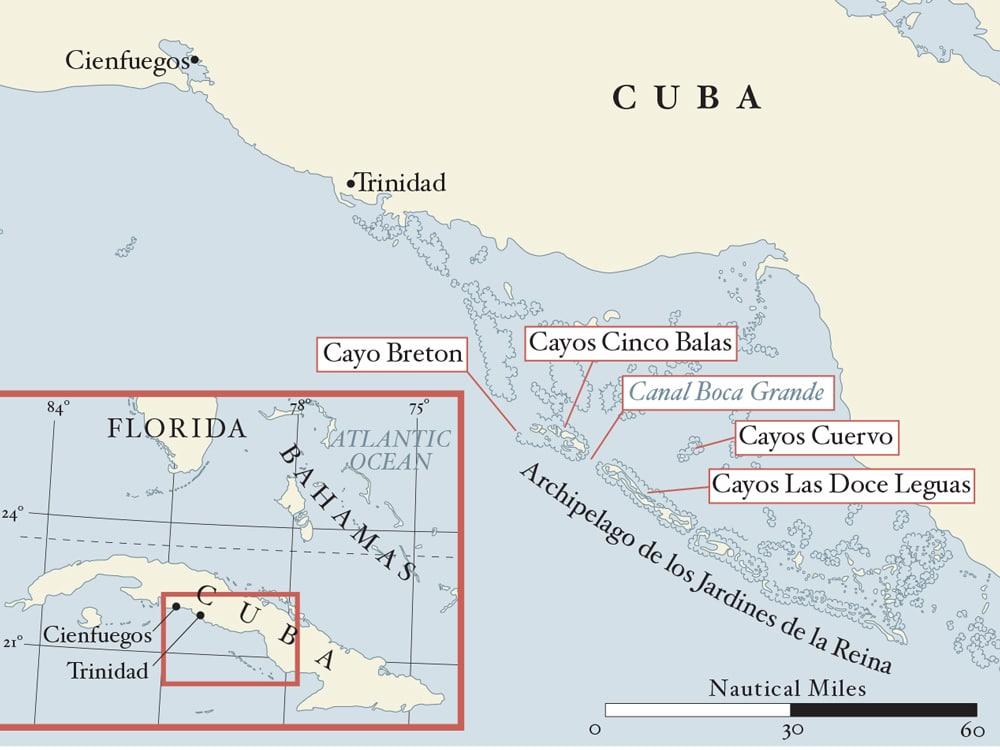
The western end of Cayo Bretón is sliced in two by a narrow channel known as the Estero Bretón, which meanders through the mangroves. I had asked about this channel at our charter briefing; it had simply looked too tempting on the charts! They recommended avoiding this alluring estuary unless you had some local knowledge, although they did not forbid us from the area. With morning, the temptation had grown, and we headed for the entrance of Estero Bretón aboard Pollock, watching the depth sounder on the way. It felt a tad surreal to be wending through the passage; however, entrance depths remained sufficient for our 4-foot draft. Once inside, the bottom fell away to over 30 feet in places. The exit at the northern end proved shoal, leaving little more than a foot under the keel.
RELATED: New Rules for Sailing to Cuba
The wind built to 20 knots as we turned eastward to head for Cayos Cuervo some 20 miles distant, one of the best-formed circular coral atolls in the Caribbean. The narrow entrance to the lagoon is marked to port by a day marker at the end of a curving sandbar. Once inside, all is calm, and an almost continuous circle of lush islands encircles the boat. We nestled into the southeast corner; a few government shrimp boats used the northwest portion of the large lagoon. All was well, so with mask, snorkel and fins I swam into the shallows to explore. Brilliant sunlight and clear water over eelgrass revealed dozens of dazzling orange starfish, stiff pen shells, crabs and mollusks.
Morning brought brilliant sun and a favorable breeze as we left the idyllic lagoon along with several of the shrimpers. We laid a course for Cayos de las Doce Leguas. We passed southward through the Canal Boca Grande to the Caribbean Sea on the south side of the islands. In the pass, depths were 20 feet, yet every feature of the bottom could be easily seen in the crystal waters.
We approached Cayo Grande through a break in the barrier reef and turned eastward, slowly working in next to the back side of the coral. John stood on the bow keeping a watch for coral heads as we nosed in, finally dropping the anchor in about 7 feet. The afternoon lunch stop was picked for proximity to the barrier reef. We launched the inflatable and motored to the reef and anchored the dinghy. I dropped into the water and was amazed by the nearly 100-foot visibility! Along the reef, schools of yellow French grunts and vibrant blue tangs swarmed by while elegant French angelfish, stoplight parrotfish and bluehead wrasses swam among beautiful live corals and purple sea fans waving in the gentle surf. The sea was alive. Listening underwater, I heard the faint crackle of crustaceans and the gnawing of fish on coral filtering through the sea. Tarpon and barracuda circled slowly beyond the reef’s edge. Ominous southern stingrays glided past and buried themselves in sand, with just their eyes and tails visible. From under the bottom edge of the reef, an 8-foot nurse shark awoke from its resting place and meandered toward me for a look.
After snorkeling, we headed northwest to Cayos Cinco Balas, again approaching from the ocean side through a break in the barrier. We anchored in shallow water in the lee of Cayo Alcatracito, a small cay offering protection from the prevailing easterlies. John and I took the inflatable in to the beach and walked the white sand, with not a soul in sight. The only tracks were those of island lizards. Herons and great egrets stalked in the shallows while Wilson’s plovers skittered along the sand in front of us.
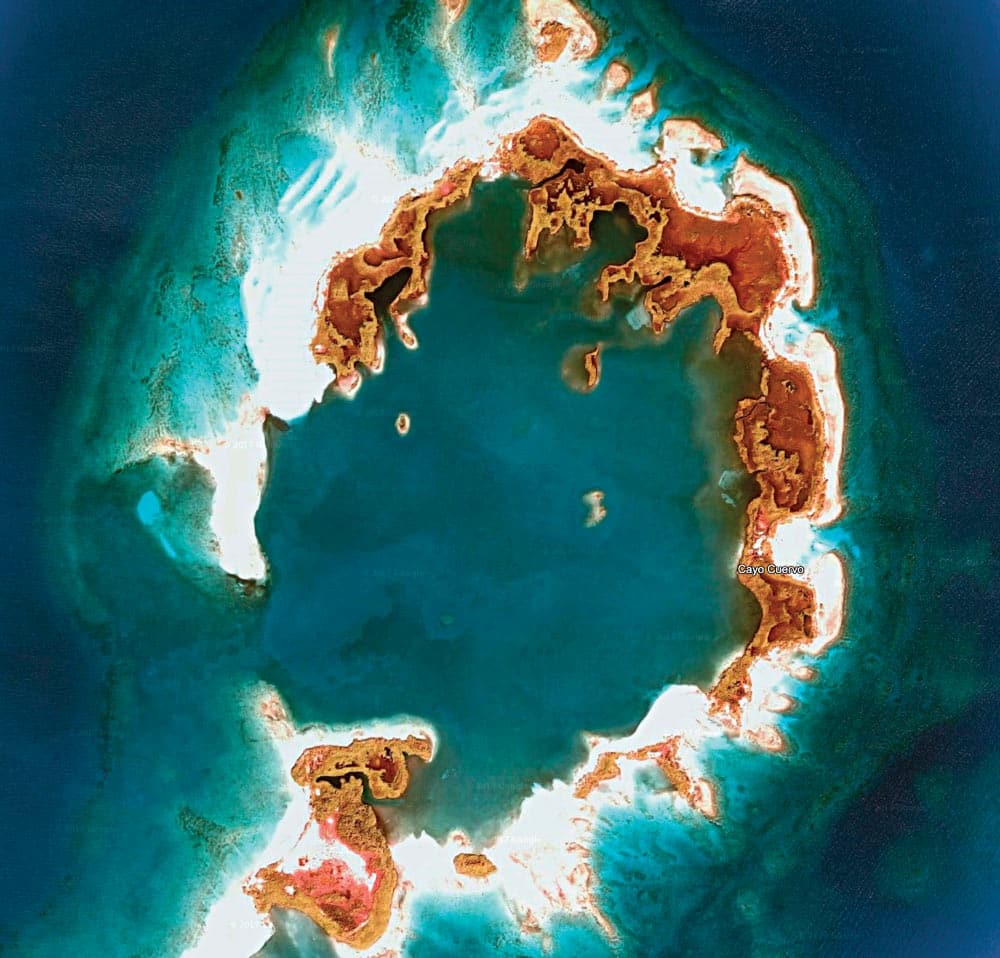
It was our last night in the remoteness of the Jardines de la Reina. The sky was a perfectly clear dark black as the moon rose in a star-filled sky. The only hint of life was the distant flash of the lighthouse on Cayo Bretón to the west. Our time in these islands did not disappoint, and while it was hard to leave, I was eager to visit the other destination on my Cuba wish list — the historic town of Trinidad.
We made an early start to cover the 50 miles to Trinidad. The town itself is a couple of miles inland on a hillside below the majestic Sierra Escambray; only rooftops and bell towers are visible from the sea. The actual port and harbor are known as Casilda, which comprises a large bay with a small commercial waterfront. On the western side is a small lagoon, which we entered through a narrow winding channel in the mangroves, dropping anchor just off the small, sleepy marina. We got into a 1950s American car for a ride around the bay to Trinidad. Along the way, we passed a billboard with Fidel Castro’s image and the slogan patria o muerte, meaning “fatherland or death.”
The driver dropped us on a narrow street of river cobblestones lined with pastel-colored homes and busy with people. The beauty of this charming UNESCO World Heritage Site is stunning; you truly feel as if you have stepped back in time a couple of centuries. Established in 1514, Trinidad is where Spanish conquistador Cortés sourced his crew for his voyage west to conquer Mexico. Later, the town’s wealth grew as a port for huge sugar plantations in the 1700s. But, by 1850, this trade had moved to other areas. Trinidad stood still.
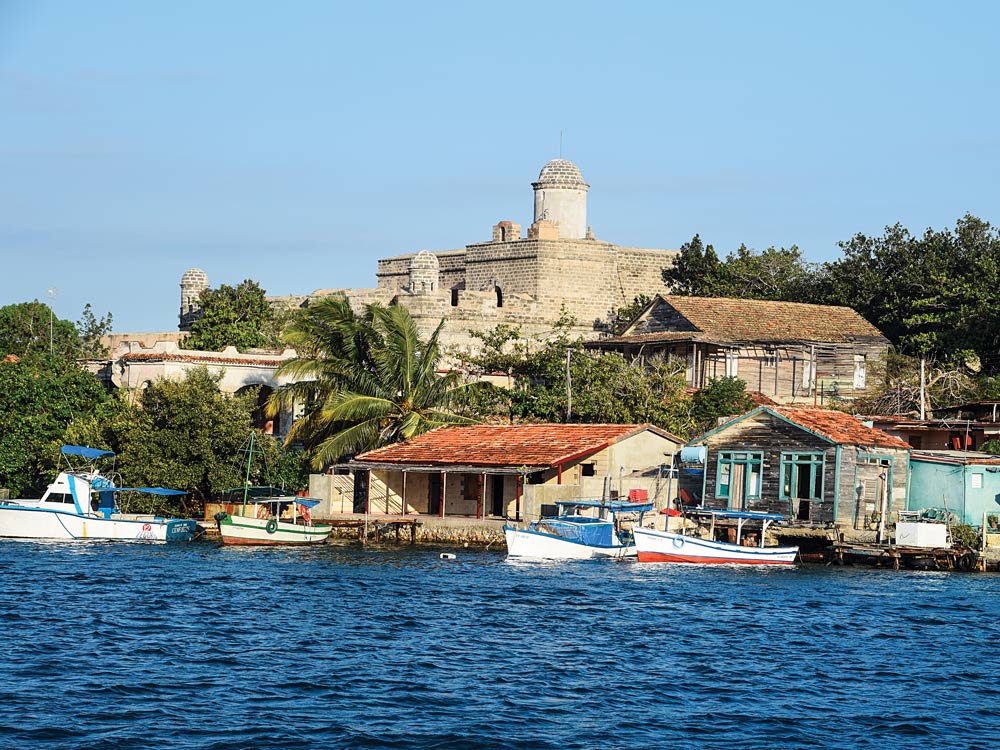
Live Cuban music drifted through the air as we entered the main plaza. We were drawn to the bell tower of the Museo de Historia Municipal, housed in a once grandiose mansion off the plaza. From the top of the wooden staircase, the bell tower offered spectacular views across the red-tile-roofed city. Back on street level, we headed off on foot through some of the barrios. Men played soccer in the streets, grandparents watched children, neighbors played dominoes, horses carried riders, and birds in wicker cages hung outside the colorful wooden doorways or next to the fanciful ironwork grilles around windows.
Back in the center, we found a paladar on the roof of a home. A five-person local band played guitar, drums, trumpet, saxophone and castanets as the singer filled the air with music. The sun slowly dropped into the distant reaches of the Sierra Escambray while we ate fresh snapper. As the moon rose, the waiters and band gathered at the roof’s edge facing the bay to watch the fishing fleet head out into the night. During their breaks, we talked with the band about music, from Cuban singer and bandleader Benny Moré to American jazz musician John Coltrane. It was an evening of perfection.
The following morning, we left Trinidad behind and sailed close to the coast, back westward toward Cienfuegos. The low coral shore ran mostly straight, occasionally indented with a cove or river and accompanying village, all with the hazy blue of the mountains beyond.
We arrived back in Cienfuegos in the early evening and tied up at the marina. On the flight back to New England, I realized that in a week of cruising the Jardines de la Reina, we had only seen one other sailboat! I recalled another Melville quote from Moby-Dick and realized I had something else in common with Ishmael: “I am tormented with an everlasting itch for things remote.” Cuba’s Gardens of the Queen was just what I needed.
Bill is a lifelong sailor who prefers remote places. His travels have taken him from the iceberg-strewn waters of northern Labrador to the Caribbean and across the Atlantic. Today much of his sailing is on his 36-foot sloop Tazzarin. He is a member of the Cruising Club of America and a fellow of the Explorers Club.
Editor’s note: The author embarked on this trip during the time that the travel restrictions for Americans to Cuba were somewhat loosened. If you are interested in Cuba travel, be sure to visit the State Department’s website (travel.state.gov) for the most current information.

